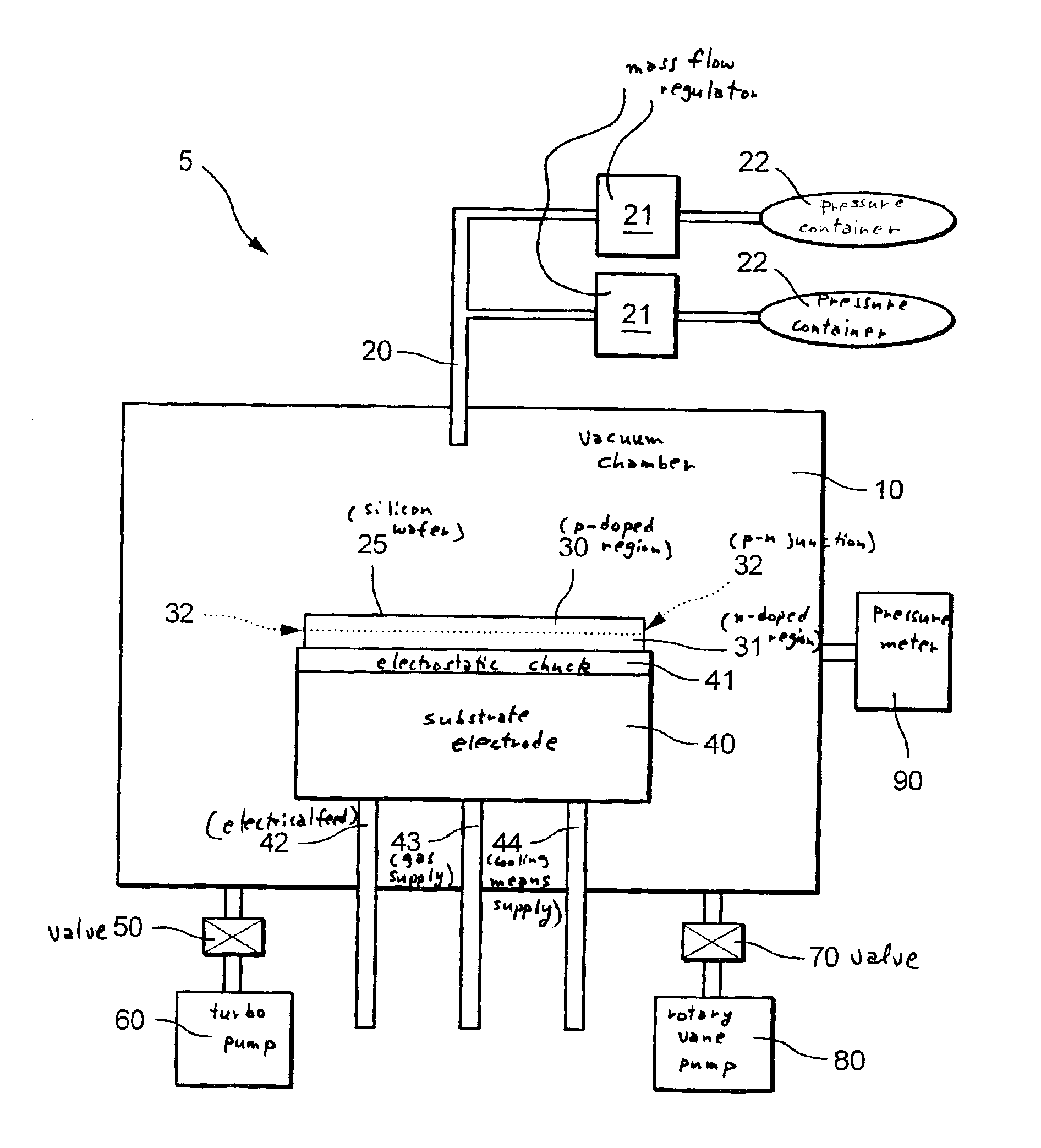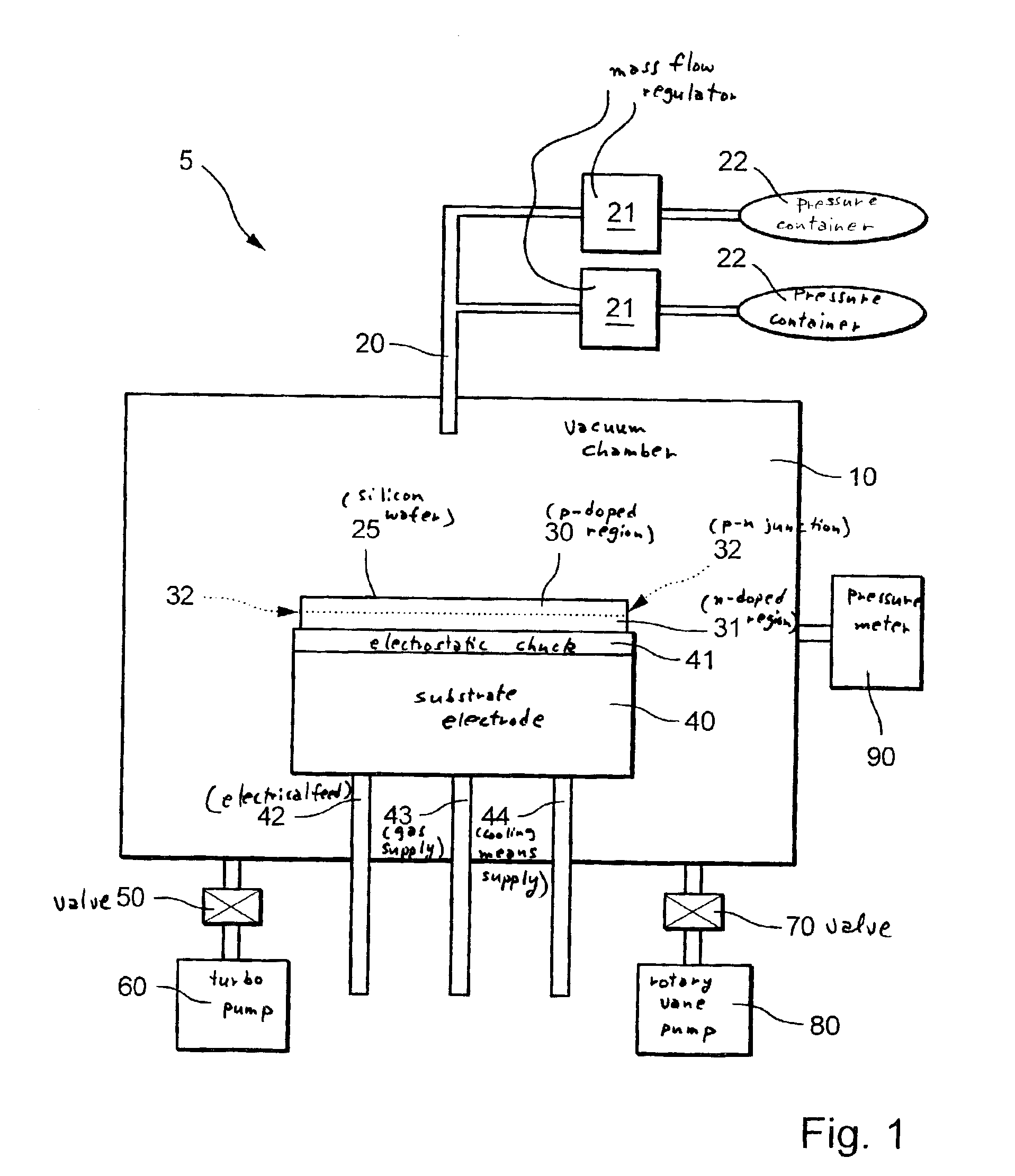Method and device for providing a semiconductor etching end point and for detecting the end point
a technology of semiconductor etching and end point, which is applied in the direction of individual semiconductor device testing, semiconductor/solid-state device testing/measurement, instruments, etc., can solve the problems of difficult control, inability to achieve simple and effective etching stop, inaccurate, etc., and achieves economic benefits, cost-effectiveness, and sufficient precision
- Summary
- Abstract
- Description
- Claims
- Application Information
AI Technical Summary
Benefits of technology
Problems solved by technology
Method used
Image
Examples
Embodiment Construction
[0018]FIG. 1 shows an etching device 5 that is suitable for carrying out the method according to the present invention, having a vacuum chamber 10 and a gas inlet 20, the process gas(es) used being supplied to the vacuum chamber 10 from pressure containers 22 via post-connected mass flow regulators 21 via gas inlet 20. In the example explained, the process gas is ClF3, which has a sufficiently high vapor pressure to be supplied via usual mass flow regulators 21, or BrF3, in which case, because of its low vapor pressure of approximately 7 mbar at room temperature, special mass flow regulators 21 are required. By the way, in FIG. 1 it may also be provided that pressure containers 22 and / or the pipes and mass flow regulators 21 are heated, in order to avoid the formation of condensate and / or to increase the vapor pressure of process gas BrF3.
[0019]In vacuum chamber 10 used as the process chamber, a substrate electrode 40 is also provided, onto which a silicon wafer 25 is clamped as the...
PUM
 Login to View More
Login to View More Abstract
Description
Claims
Application Information
 Login to View More
Login to View More - R&D
- Intellectual Property
- Life Sciences
- Materials
- Tech Scout
- Unparalleled Data Quality
- Higher Quality Content
- 60% Fewer Hallucinations
Browse by: Latest US Patents, China's latest patents, Technical Efficacy Thesaurus, Application Domain, Technology Topic, Popular Technical Reports.
© 2025 PatSnap. All rights reserved.Legal|Privacy policy|Modern Slavery Act Transparency Statement|Sitemap|About US| Contact US: help@patsnap.com


